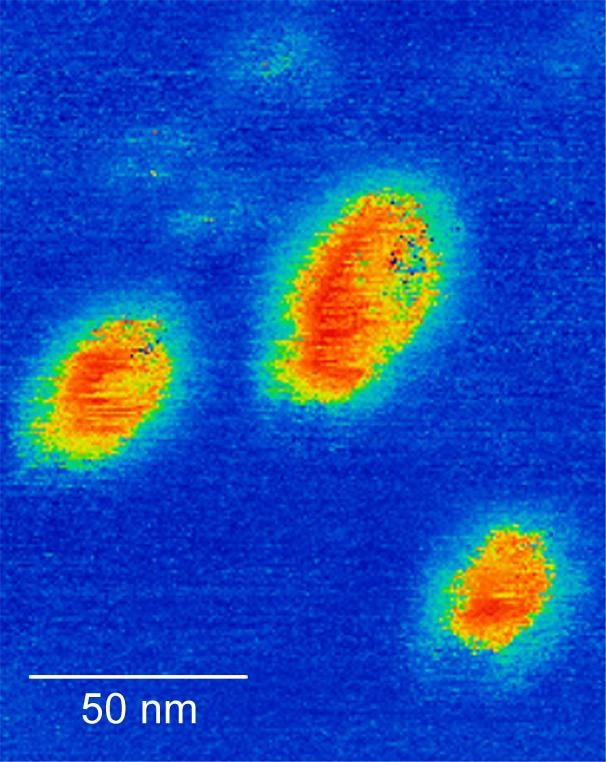Jul 8 2019
Scientists from UNSW have described the first-ever observation of a native ferroelectric metal in a paper published in Science Advances on July 5th, 2019.
 Ferroelectric domains in a WTe2 single crystal (PFM imaging). (Image credit: FLEET)
Ferroelectric domains in a WTe2 single crystal (PFM imaging). (Image credit: FLEET)
The research illustrates the first example of a native metal that has bistable and electrically switchable spontaneous polarization states—the trademark of ferroelectricity.
We found coexistence of native metallicity and ferroelectricity in bulk crystalline tungsten ditelluride (WTe2) at room temperature.
Dr Pankaj Sharma, Study Author, UNSW
He added, “We demonstrated that the ferroelectric state is switchable under an external electrical bias and explain the mechanism for ‘metallic ferroelectricity’ in WTe2 through a systematic study of the crystal structure, electronic transport measurements and theoretical considerations.”
A van der Waals material that is both metallic and ferroelectric in its bulk crystalline form at room temperature has potential for new nano-electronics applications.
Dr Feixiang Xiang, Study Author, UNSW
Ferroelectric Backgrounder
Ferroelectricity can be regarded as an analogy to ferromagnetism. A ferromagnetic material exhibits permanent magnetism, and to an amateur, it is just a “magnet” with north and south poles.
Similarly, ferroelectric material exhibits an equivalent electrical property known as permanent electric polarization, which arises from electric dipoles possessing equal but oppositely charged ends or poles. In ferroelectric materials, these electric dipoles are present at the unit cell level and lead to a non-vanishing permanent electric dipole moment.
This spontaneous electric dipole moment can be repeatedly shifted between two or more analogous conditions or directions when an external electric field is applied—a property exploited in several ferroelectric technologies, for instance, RFID cards, nano-electronic computer memory, medical ultrasound transducers, submarine sonar, infrared cameras, pressure and vibration sensors, and precision actuators.
Traditionally, ferroelectricity has been seen in materials that are semiconducting or insulating rather than metallic, since conduction electrons in metals remove the static internal fields resulting from the dipole moment.
The Study
A room-temperature ferroelectric semimetal was reported in Science Advances in July 2019.
Bulk single-crystalline tungsten ditelluride (WTe2)—which comes under a class of materials called transition metal dichalcogenides (TMDCs)—was probed by spectroscopic electrical transport measurements, by conductive-atomic force microscopy (c-AFM) to corroborate its metallic behavior, and by piezo-response force microscopy (PFM) to map the polarization, identifying lattice deformation caused by an applied electric field.
Ferroelectric domains—the areas with oppositely oriented direction of polarization—were directly imaged in freshly cleaved WTe2 single crystals.
The switching of the ferroelectric polarization was illustrated using spectroscopic-PFM measurements with top electrode in a capacitor geometry.
The research was supported by funding from the Australian Research Council through the ARC Centre of Excellence in Future Low-Energy Electronics Technologies (FLEET), and the study was partly carried out using facilities of the NSW Nodes of the Australian National Fabrication Facility, with the help of the Australian Government Research Training Program Scholarship scheme.
The experimental findings of the electronic and structural origins of the ferroelectric instability of WTe2, supported by the National Science Foundation, were verified by first-principles density functional theory (DFT) calculations (University of Nebraska).
Ferroelectric Studies at Fleet
At FLEET, ferroelectric materials are ardently investigated for their prospective use in low-energy electronics, “beyond CMOS” technology.
For example, the switchable electric dipole moment of ferroelectric materials could be employed as a gate for the underlying 2D electron system in an artificial topological insulator.
When compared to traditional semiconductors, the extremely close (sub-nanometer) proximity of a ferroelectric’s electron dipole moment to the electron gas in the atomic crystal guarantees more effective switching, overcoming challenges of traditional semiconductors where the conducting channel is hidden tens of nanometers under the surface.
Topological materials are examined within FLEET’s Research theme 1, which aims to create ultra-low resistance electronic paths with which a new generation of ultra-low energy electronics can be produced.
FLEET is an ARC-funded research center assembling over a hundred Australian and international experts to create a new generation of ultra-low energy electronics, inspired by the need to minimize the energy used up by computing.